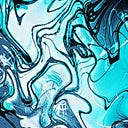The Veil and the Crucible
A Spiritual Allegory of Christ’s Journey Through Esoteric Lenses
The Birth of a Legend in Bethlehem
In the quiet, dusty town of Bethlehem, under the shadow of King Herod’s ruthless decree, a profound spiritual narrative was unfolding. Herod, of mixed Jewish and Arab heritage, feared the prophecy of a new king from David’s line. His response? A brutal order to massacre all male infants in Bethlehem.
This act of terror was more than a historical event; it symbolized the world’s resistance to divine consciousness awakening within each person. The grief-stricken cries of mothers echoed through history, mirroring the pain of shedding the old self to make way for spiritual rebirth.
While Herod’s grand Temple in Jerusalem stood as a symbol of material power and Jewish identity, Jesus’s birth marked the beginning of an inner journey — the awakening of the divine spark at the base of the spine.
A Life on the Move: The Spiritual Ascent
Jesus’s early years were a life of exile and survival, a metaphor for the spiritual path — a journey where one navigates through hardship to achieve higher consciousness. His parents, Joseph and Mary, can be seen as symbols of the human soul, ready to nurture the divine essence within.
Each city they traveled to could represent different spiritual stages or chakras one passes through in awakening:
- Baptism by John — A purification and awakening of inner energy.
- Temptations by Satan — A test of ego, akin to overcoming the solar plexus chakra’s challenges of power and will.
- His Ministry — A progression through love (heart chakra), truth (throat chakra), and wisdom (third eye), culminating in enlightenment.
The Teachings and the Trials
Jesus’s teachings and miracles were not just acts of compassion or defiance against Roman and religious authorities; they illustrated how divine energy overcomes human limitation. His radical claims to divinity sparked polarization, viewed both historically and mystically.
His crucifixion, often seen as a political act, can be understood in mystical terms as the crucifixion of the ego. The cross itself symbolizes the intersection of the material (horizontal) and spiritual (vertical) — a challenge faced by all who seek transcendence.
- Hematidrosis (sweating blood) — Could symbolize the intense spiritual struggle and purification process, aligning with esoteric ideas of the soul’s transformation.
- Crucifixion and Resurrection — Represent the death of the lower self and the ascension of the enlightened self, reaching the crown chakra for divine union.
- 33 Symbolism — The belief Jesus was crucified at the age of 33, aligns with the 33rd degree signifying the pinnacle of enlightenment in freemasonry while in numerology, 33 is known as a Master Number.
The Political and Spiritual Landscape
Figures like Herod, Pilate, and the Roman Empire symbolize the external resistance to spiritual awakening — an allegory for the conflict between ego and enlightenment within us.
The destruction of the Second Temple and the rise of Christianity from persecution reflect a universal truth: the old must give way to the new, just as material attachments must surrender to spiritual transformation.
Jerusalem: Where History Meets Mysticism
Jerusalem, more than just a city, stands as a spiritual landscape — a place where divine and human intersect, where history and mysticism converge. Across centuries, Jesus’s story has inspired countless seekers — not just as a religious figure, but as a symbol of profound spiritual truth and transformation.
The Journey Within
From Bethlehem to the cross, Jesus’s path mirrors the soul’s journey toward enlightenment. Every event, every trial, and every triumph marks a step toward divine realization — a blueprint for spiritual ascension embedded within the human experience.
